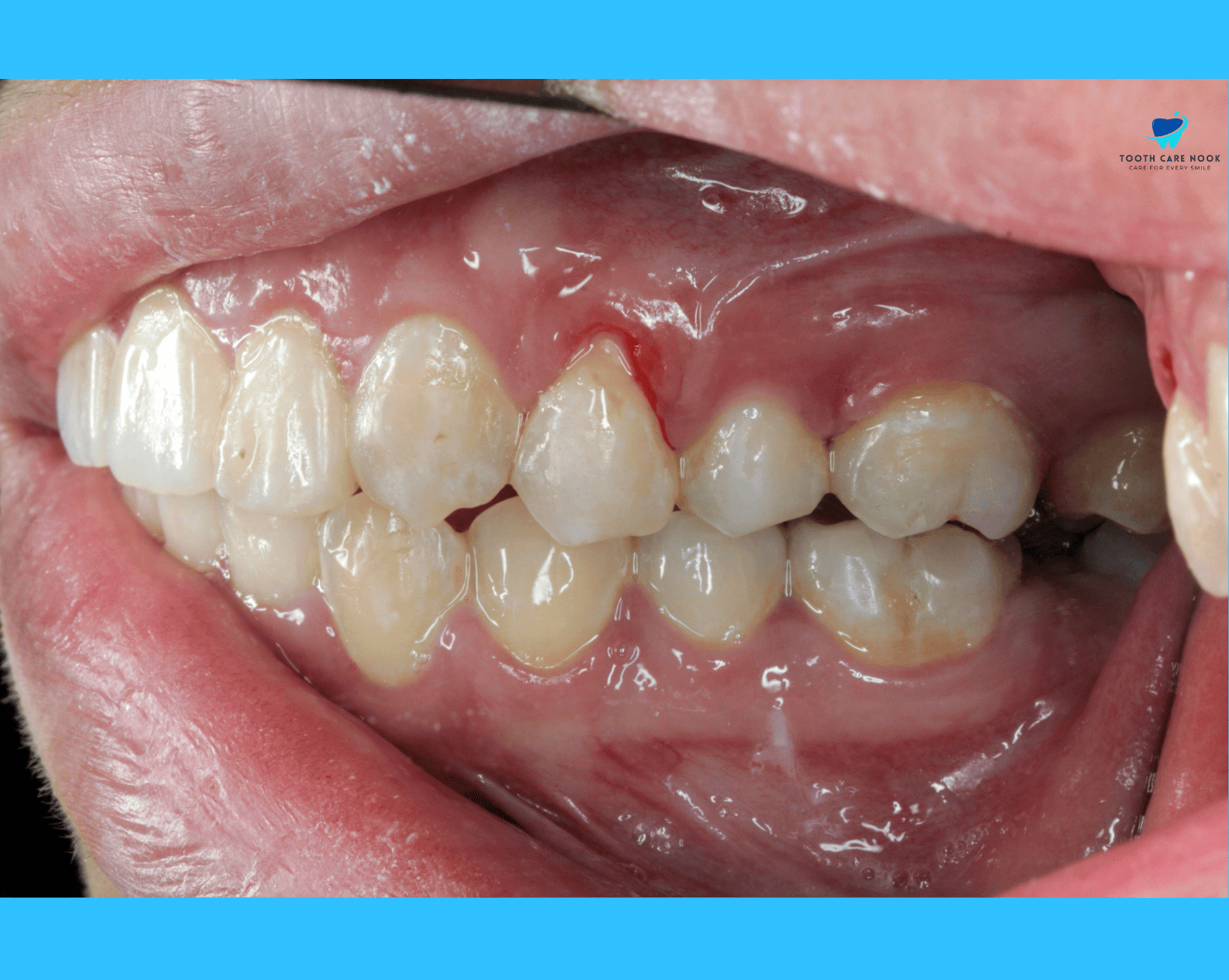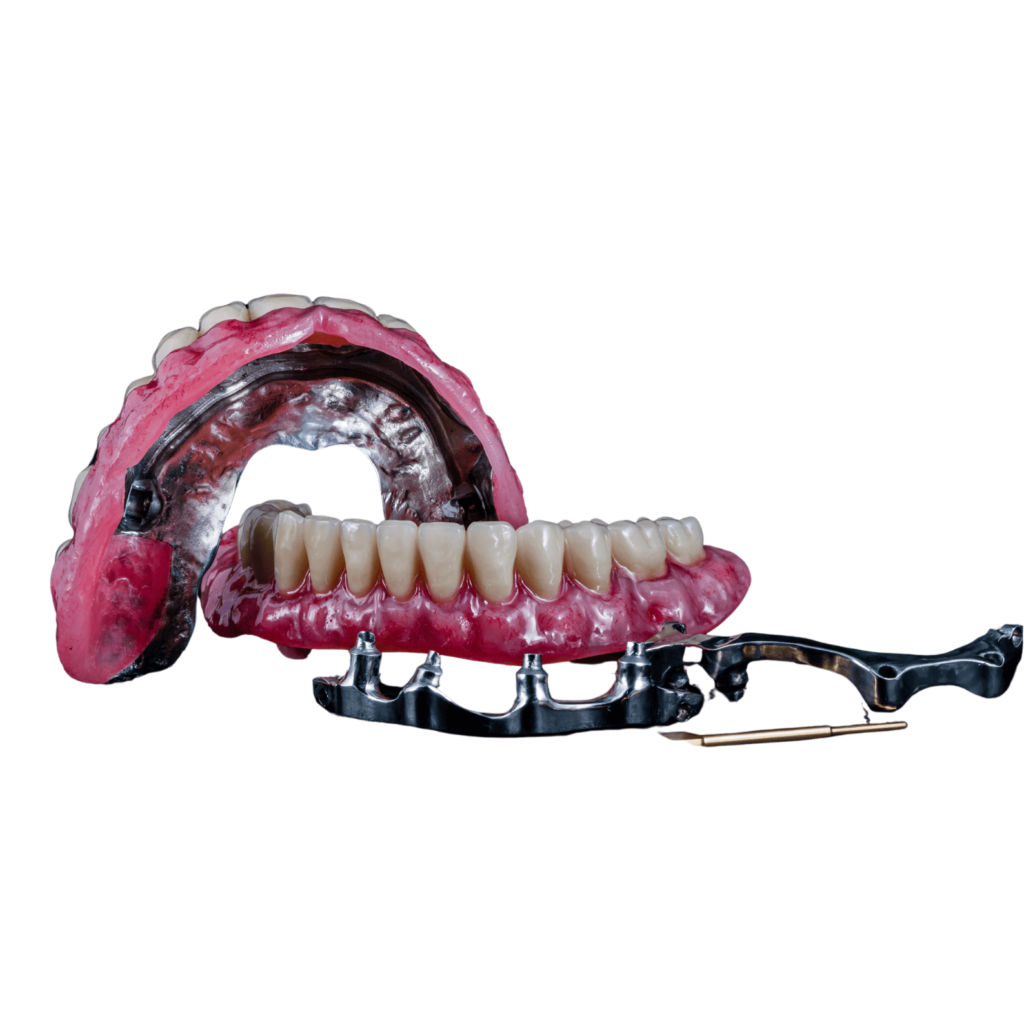How Long Does it Take to Get All-on-4 Dental Implants?
All-on-4 dental implants can be surgically placed within a few hours for both the upper and lower arches of your mouth. This can be completed in one day if the crown is fitted immediately after the dental implant placement.
However, the suitability for immediate loading and the overall treatment timeline will vary based on individual factors such as bone quality, oral health, and specific treatment requirements.
What is An All-on-4 Dental Implant?| Step-by-Step Procedure
Here’s a step-by-step All-on-4 dental implant procedure:
Consultation and Treatment Planning:
The procedure begins with a thorough examination by your dental professional. During this visit, your dentist will assess your oral health, discuss your treatment goals, and determine if you are a suitable candidate for the All-on-4 procedure.
If you’re a suitable candidate, the dentist will create a personalized treatment plan for your specific needs. The plan includes determining the placement of the dental implants along with extractions if necessary, and bone grafting if the bone volume is insufficient to support the implants.
All-on-4 Dental Implant Placement:
On the day of the surgery, the dental implants are precisely placed into the jawbone with the help of advanced surgical techniques. The two implants are inserted towards the front of the jaw where bone density is higher, and two implants are angled towards the back to maximize contact with available bone.
Temporary Prosthesis:
After implant placement, a temporary prosthetic bridge or denture is attached to the implants to restore aesthetics and function while the implants heal. This temporary restoration allows you to maintain normal chewing and speech functions during the osseointegration period.
Healing Period:
Over the next several months, the implants gradually fuse with the surrounding bone tissue through osseointegration. This integration is a must for the long-term success and stability of the implants. During this healing phase, you’ll have periodic follow-up appointments with your dentist to monitor progress and ensure proper healing.
Final Prosthesis:
Once osseointegration is complete, the temporary prosthetic is replaced with a final, custom-made bridge or denture. This prosthetic is specifically designed to match the shape, size, and color of your natural teeth to provide a seamless and lifelike smile.
How Long of a Process Is All on Four Dental Implants?
The All-on-4 dental implant procedure typically takes four to six months to complete. Initial consultation and treatment planning are followed by a single surgical session for implant placement, which usually lasts a few hours.
The healing period takes several months for the implants to integrate with the jawbone. So from start to finish, the process can take approximately four to six months.
How to Care After All on 4 Teeth Implants?
Following are some preventive measures you can follow for the aftercare of your All-on-4 dental implants:
- Minimize chewing on hard or sticky foods that can put excessive pressure on the implants. Opt for softer foods and cut tough items into smaller and more manageable pieces before eating.
- If you smoke must quit or reduce your tobacco use to improve the longevity of your All-on-4 dental implants. Smoking can negatively impact the health of your gums and the success of your implants.
- You can wear a custom-made mouthguard to protect your implants and prosthetic teeth from damage during sports.
- Keep an eye out for any signs of complications such as inflammation, pain, or mobility of the implants. If you notice any abnormalities, talk to your dentist immediately for further treatment.
What Potential Issues You May Face After All on Dental Implant?
Infection:
Infections around the implant site can occur if you do not maintain proper oral hygiene. This may lead to inflammation, discomfort, and potential implant failure if left untreated.
Bone Loss:
In some cases, gradual bone loss around the implants can occur over time. This can result from factors like gum disease, inadequate oral hygiene, or excessive pressure on the implants.
Gum Recession:
Improper oral hygiene practices or factors such as bruxism can contribute to gum recession around the implants. This may lead to exposure of the implant surfaces and compromise their stability.
Nerve Damage:
During implant placement, there is a slight risk of nerve damage, particularly in the lower jaw. Symptoms can include numbness, tingling, or altered sensation in the lips, chin, or tongue.
It’s important to know that while these issues are possible, they are relatively rare, especially when experienced dental professionals perform the procedure and patients adhere to post-operative care instructions.

What Are The Disadvantages Of All-on-4 Dental Implants?
- All-on-4 implants consist of multiple porcelain caps attached to each implant, rather than individual teeth. This can feel unusual, particularly when flossing, and requires adjustment for some patients.
- The process takes several months. Some patients can find the extended treatment timeline to be a disadvantage, especially if they are seeking a quicker restoration solution.
- All-on-4 implants can involve a learning curve which can cause initial difficulty in speaking. However, with practice, this challenge diminishes over time.
- There’s a slight risk of implant rejection, where the implant fails to integrate with the gums and bone but this is so rare.
- Unlike dentures, the implant procedure involves drilling into the gums and jawbone which leads to temporary tenderness and discomfort during the healing phase.

